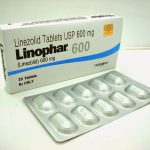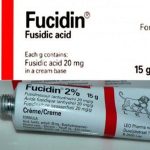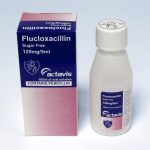
Lincomycin is a lincosamide antibacterial with actions and uses similar to those of its chlorinated derivative, clindamycin.

Linezolid is an oxazolidinone antibacterial with activity against a range of aerobic Gram-positive bacteria including vancomycin-resistant enterococci and meticillin-resistant Staphylococcus aureus. It is less active against Gram-negative bacteria, but has some in-vitro activity against Haemophilus influenzae, Legionella spp., Moraxella catarrhalis (Branhamella catarrhalis), Neisseria gonorrhoeae, and Pasteurella spp.

Fusidic acid is a steroidal antibacterial with a bacteriostatic or bactericidal activity, mainly against Gram-positive bacteria. Fusidic acid inhibits bacterial protein synthesis although, in contrast to drugs such as the macrolides or tetracyclines, it does not bind to the bacterial ribosome, but inhibits a factor necessary for translocation of peptide subunits and elongation of the peptide chain.

Fosfomycin is a bactericidal antibacterial. After active uptake into the cell it is reported to interfere with the first step in the synthesis of bacterial cell walls. It is active in vitro against a range of Gram-positive and Gram-negative bacteria including Staphylococcus aureus, some streptococci, most Enterobacteriaceae, Haemophilus influenzae, Neisseria spp., and some strains of’ Pseudomonas aeruginosa although some are resistant. Bacteroides spp. are not sensitive.

Flucloxacillin is bactericidal with a mode of action similar to that of benzylpenicillin, but is resistant to sta-phylococcal penicillinase. It is active therefore against penicillinase-producing and non-penicillinase-producing staphylococci. Its activity against streptococci such as Streptococcus pneumoniae and Str. pyogenes is less than that of benzylpenicillin, but sufficient to be useful when these organisms are present with penicillin-resistant staphylococci.